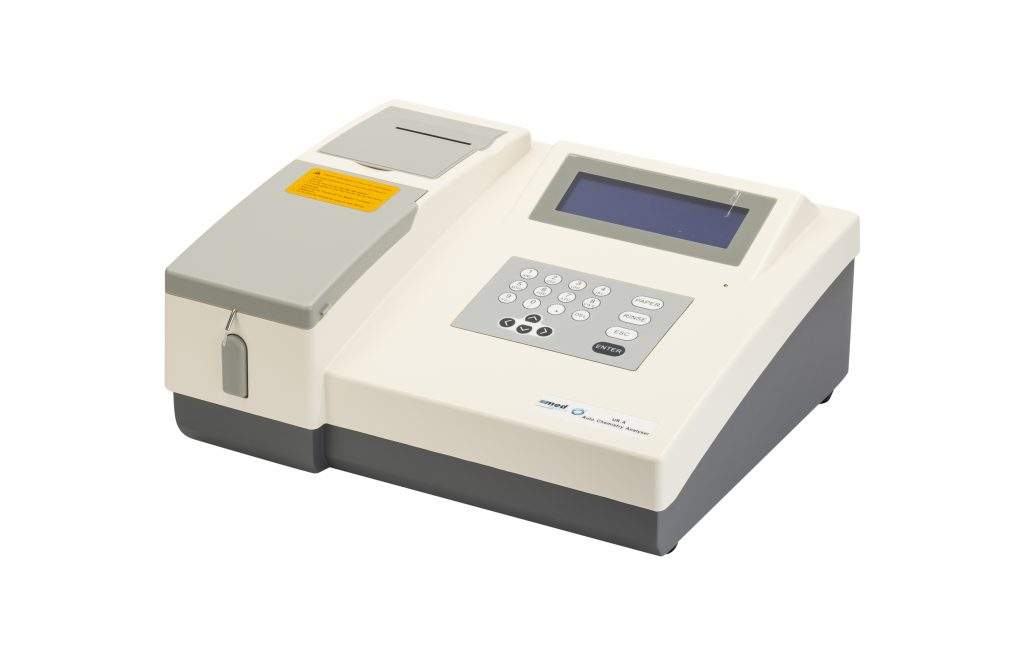
Working of Clinical Chemistry Analyzer
What is Clinical Chemistry Analyzer?
A Clinical Chemistry Analyzer, also commonly termed a biochemistry analyzer, is a machine designed less with various technologies to measure the values of data including photometric testing, colorimetric testing, and potentiometry analysis of urine, plasma, or blood sample.
From very small-scale clinics to some of the high-end hospitals and labs, this clinical chemistry analyzer machine is highly preferred for the testing and analysis of enzymes, proteins, electrolytes, and so on.
Some of the major and wide-ranging applications of the clinical chemistry analyzer include tests for the drugs-of-abuse, testing for cardiac markers, metabolic functions, and monitoring of diseases such as diabetes levels.
These biochemistry or clinical chemistry analyzers are quite compact and easy to handle while being the benchtop machines that offer super-handy and user-friendly modes with few but efficient test options.
Understanding the Principle behind the Analyzer

The measurement principle along with the Colorimetric Analysis Method is used in the working of the Clinical Chemistry Analyzer. It works as follows:
In earlier days of education, we have studied a certain reaction. Adding iodine to the provided starch solution, the solution shows the conversion to a blue color. This confirms the presence of starch. Conversely, the test can be reversed by adding a sample of saliva to the solution. The color blue disappears.
Why does that happen? An enzyme by the name of Amylase is present inside the saliva which acts as a reaction agent and dissolves the starch completely.
Putting the same concept of color change and measurement method, the clinical chemistry analyzer operates. The quantity of a specific substance in the blood sample is converted into color to measure the amount of change. This method of analysis of the amount of change in color of a sample is the colorimetric analysis method.
Working Steps of Clinical Chemistry Analyzer Machine
The samples accepted by the Clinical Chemistry Analyzer Systems are a pale yellow liquid portion of the blood which is called a blood sample or a urine sample that can be used. A certain specific amount of the sample is provided inside a dilution pipette. This provided sample is further diluted by 5 times by using a dilution disk.
Diluted sample can therefore be utilized for the measurement to be of around 150 microliters that is ideal. This sample can then be further broken down by taking 2-25 microliters for every test that is required for the same sample and put in the reaction cell to record the results. The cell previously also contains the reagent transferred here for the duration of testing.
Reaction cell consisting of a sample and reagent is then passed through certain reactions. This reaction process is carried out at a fixed temperature of about 37 micros for optimum results. At times, reagent 1 might not show a visible desired reaction, then certain reagents 2 and 3 are ready to follow through.
Advantage of clinical chemistry analyzer
Having an onboard analyzer with fewer calculation steps helps to carry out tests quickly. This is most beneficial in the case of critical patients where a quick diagnosis is needed to treat accordingly.
- The state-of-the-art clinical chemistry analyzer provides zero chance of errors and is much reliable in terms of diagnosing the cause of the problems in patients. This is due to automation technology that rules out human error.
- This analyzer provides a comprehensive report for each test through a printer, screen view, or transfer to online mode. The results are displayed in a custom format for better understanding.
- It can also store a large number of results in its memory for future references. This consists of a large non-volatile memory to save results securely.
- It is a quite handy machine that is easy to maintain and service.
This reaction is kept under work continuously for about 10 minutes. After this, the depth of the color change is noted by using a machine called a calorimeter. This is also referred to as a multi-wavelength photometer.
In this photometer, a dedicated beam of light is shined through a certain sample acquired and the amount of transmission that occurs is measured electrically. A to D converters are used to convert the electronic data gathered into numerical data calculated by the Central Processing Unit. The results obtained are the output.


















